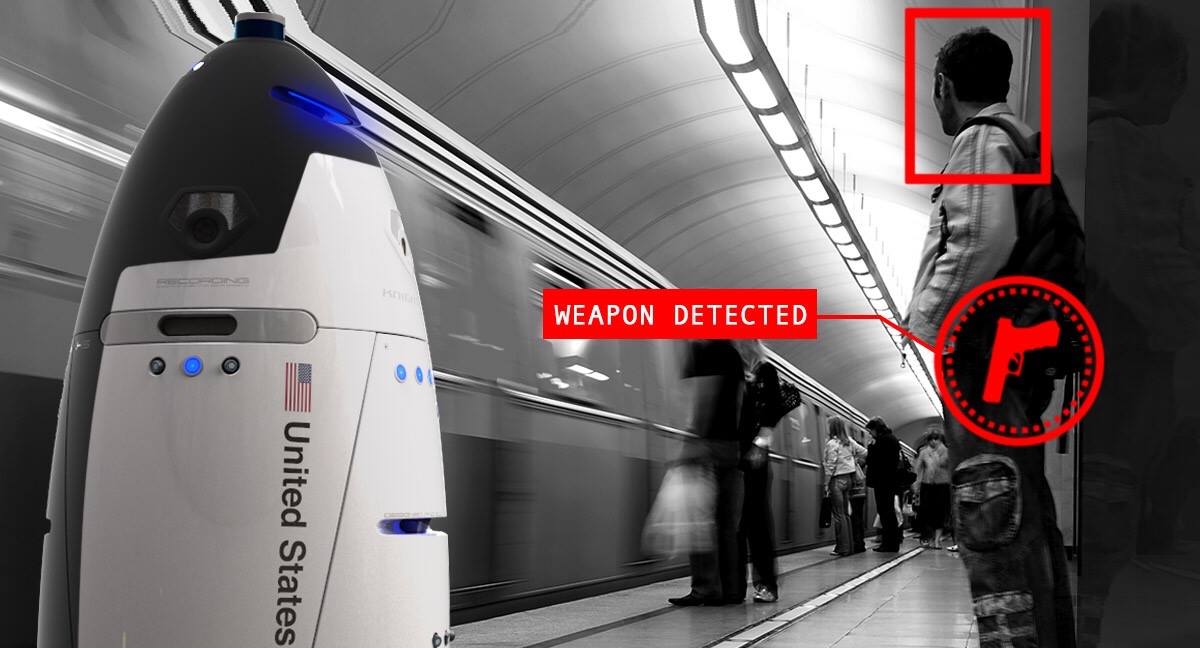With technology evolution comes change, especially in industries where jobs currently done by humans could almost entirely be done by robots—and there may be a lot of those kinds of industries. Competition in the job market is getting serious, and this is obvious in the security sector as businesses are extended the opportunity to replace security guards and mall cops with products like Knightscope’s Autonomous Data Machines—full-time security guards that work more efficiently and response more rapidly.
The ADM’s are designed to perform most of the tasks human security guards can do. They can navigate around people and objects (indoor and outdoor) and, over time, will be able to see, feel, hear and smell as they become accustomed to an area. One immediate advantage of a non-human presence is availability; ADMs provide 24/7 patrolling and monitoring. The robots even find their way to a charging pad when necessary, rather than the classic coffee break. Working a 24-hour shift, while remaining alert and recording all activity, is pretty unrealistic for a human. For robots though, that’s par for the course.
Knightscope’s Security Operations Center allows clients to access a live-feed through a desktop or mobile app. The system uses advanced detection within a geo-fenced area to send real-time alerts to clients. For instance, if someone is trespassing, or if a car is parked in a restricted area, the ADM security guards will detect this and immediately dispatch an alert. Knightscope also programs the ADMs to detect license plate numbers and recognize media access control (MAC) addresses on mobile devices.
Of course, at the other end of the alert will likely be a human whose response is needed for authorization of action. If there is an issue onsite, immediate access to judgement, reason and risk can often be an invaluable asset. Also, facial recognition has yet to be incorporated into the Knightscope software, so false alarms and blind paranoia could be an issue, though there could very easily be a straight-forward scheduling, pre-authorization, or enhanced direct verification process introduced.

The 300lb robocops (coming in 2 sizes: the K3 model at 4ft tall and 2ft wide, and the K5 model at 5ft tall and 3ft wide) do offer a constantly observant, objective, authoritative presence, and perhaps it is that lack of available judgement, or human error, that may deter crime. Plus, humans can interact through the machines; their design includes intercom capabilities, which allows people on-site and central staff to connect remotely.
As you may have noticed, many of these functions can be performed by human security guards to an effective degree. That being said, the ADMs, of course, offer some advanced features that real guards just cannot offer. For instance, the autonomous robots can help prevent cyber-attacks and security breaches by sending alerts about devices that are trying to access databases, accounts or other devices within a private network.
Knightscope robots can also flag a person who is carrying an unusual number of devices, or a particular kind of item—like a gun, a USB key, or a pair of bolt cutters. Knightscopes ADMs can also provide endless amounts of time-stamped video and (presumably perfect) reports of property conditions.
There’s a little more complexity to the role though, isn’t there? Building guards are not only responsible for being the eyes and ears of a property, but they also serve as ambassadors of sorts. Guards are almost always available to provide directions, discuss the parking situation, help you find a first aid kit or a bathroom, or even let you know if an elevator is unavailable because of construction work; they can quickly climb stairs, ask if you’re choking, or unlock traditional doors which may be required during a fire or emergency. These are more “outside the box” features that Knightscope’s ADMs are not programmed to do at this time.
Will they need to? Maybe. As you would expect, much of this conversation will come down to a balance of costs. According to the U.S. Department of Labor, the average rate for a security guard is $13.68 per hour. Knightscope rents out a robot for less than $7.00 per hour; that’s less than minimum wage. How much personal touch can be sacrificed in order to cut labor costs by upwards of 50%? It could be a lot.
Human guards and robots both offer qualities that can benefit the safety and security of a building, and they both have claim to their own brands of exclusive skills. Robots are undeniably already a prevalent part of the workforce (they’re even floating around helping people in department stores), and ever since the advent of the video camera, the world of property security was headed in the same direction. For now, it’ll need to be a team sport, but the camaraderie may not last forever.


